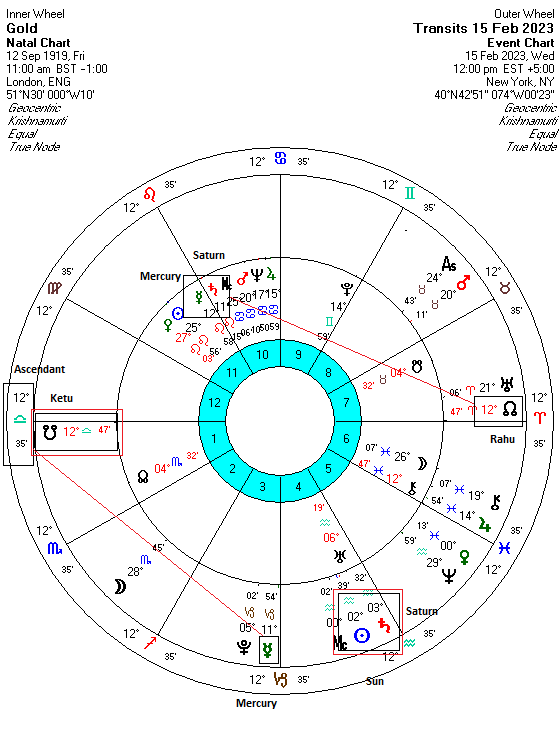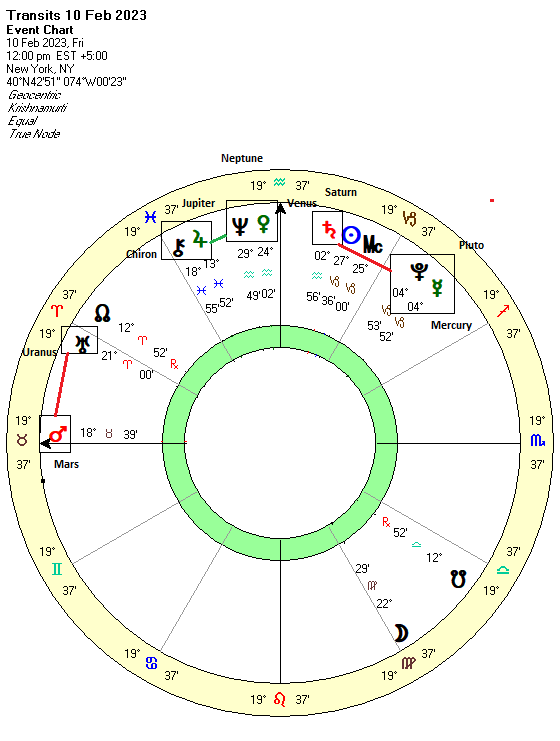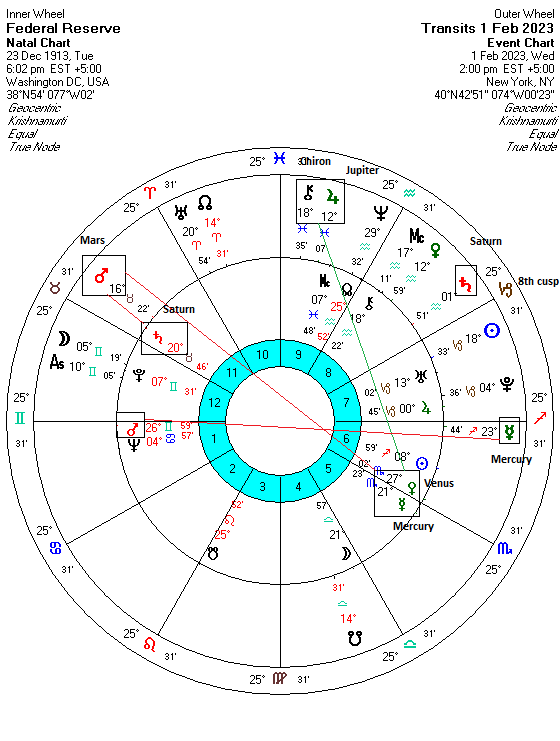(22 February 2023) US stocks moved lower for a fourth straight day after the Fed minutes reaffirmed the central bank's commitment to higher rates for the rest of the year. Investors have become more cautious in recent weeks as stubbornly high inflation may force the Fed to maintain a more restrictive monetary policy. Higher rates are generally bad news for stocks since they make borrowing more expensive which reduces spending and puts pressure on the corporate bottom line.
Thus far, this week's pullback has coincided with a bearish alignment of Mercury, Mars and Uranus. While none of these planets formed full-strength Vedic aspects with each other, they nonetheless were in a close alignment for yesterday's big sell-off as all three planets occupied the 21st or 22nd sidereal degree of their respective signs: Mercury (21 Capricorn), Mars (22 Taurus) and Uranus (21 Aries). As a rule, alignments involving Mars tend to have more downside risk, and Mercury-Mars alignments are somewhat more vulnerable to declines. In this case, the Uranus factor may have added some amplification to the volatile Mercury-Mars energy.
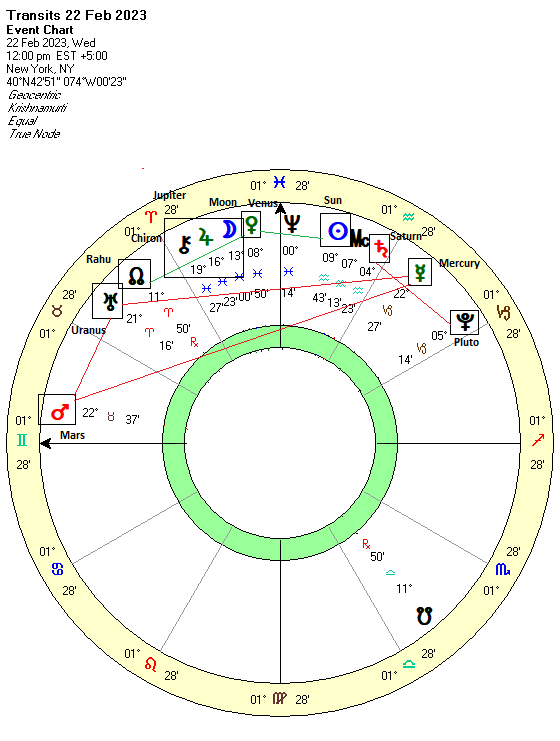
While both Mercury and Mars moved past their alignment with Uranus today, they nonetheless formed an exact 120-degree aspect this afternoon. This was perhaps a lingering bearish influence in today's trading session, which, although negative, was much less negative than Tuesday. And while the 120-degree angle is not considered a proper Vedic aspect, it is worth noting that Mercury and Mars were conjunct (with Rahu) in the key 9th harmonic/divisional or navamsa chart. Although less important than the rasi chart, the navamsa chart can often provide additional information of the relevant planetary energies.
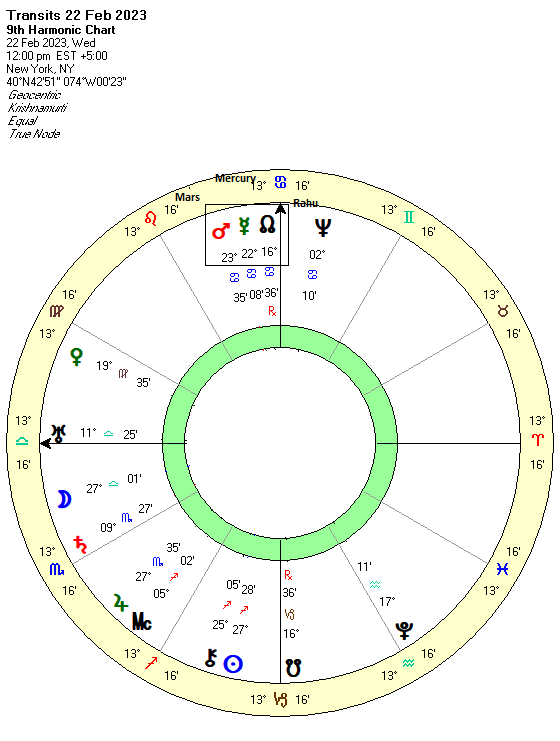
With faster-moving Mercury now separating from its alignment with Mars, the late week should be less bearish. In addition, we can see that the approach of the Sun-Venus-Rahu alignment could be more bullish for Thursday and Friday. The inclusion of Rahu in this pattern is a matter of some debate perhaps given its natural malefic quality. However, it tends to be changeable more than anything else and is usually less bearish than Mars. In many cases, it can actually be quite bullish. Also, its energy tends to work better with Venus, at least for material matters such as the stock market. Bulls could also get a boost from the Moon's conjunction with Jupiter and Chiron.
For more details, check out my weekly subscriber newsletter which is published every Sunday. In addition to reviewing the key planetary and technical influences on US and Indian stocks for the short and medium term, I also provide an astrological analysis of potential upcoming moves in currencies, gold and oil.
These updates are usually posted midweek. You can be notified of new posts by following me on Twitter.


